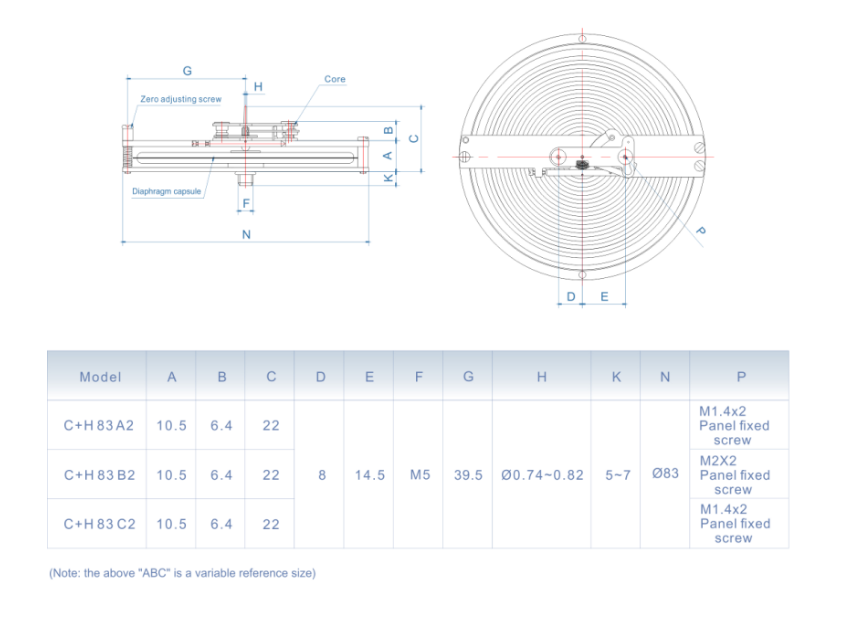
9월 . 25, 2024 16:52 Back to list
fire pressure gauge
Understanding Fire Pressure Gauges Ensuring Safety in Hazardous Environments
Fire safety is a critical aspect of many industries and buildings, where the potential for emergencies can have devastating consequences. One essential tool in fire safety management is the fire pressure gauge. This instrument is pivotal in monitoring the performance and reliability of fire suppression systems, ensuring that they function correctly when needed most.
What is a Fire Pressure Gauge?
A fire pressure gauge is a device used to measure the pressure of the water or other extinguishing agents within fire protection systems, such as sprinklers, fire hoses, and standpipe systems. These gauges are designed to provide real-time feedback on the operational status of the fire suppression system, allowing facility managers and safety personnel to verify that the system is ready to respond in case of a fire outbreak.
Importance of Fire Pressure Gauges
The functionality of fire suppression systems is heavily reliant on adequate pressure levels. Low pressure may indicate a malfunction or a leak in the system, which could compromise its effectiveness during an emergency. Regularly monitoring the pressure through gauges ensures that any pressure drop or fluctuation can be addressed promptly, maintaining the system’s readiness.
Furthermore, fire pressure gauges are often required by local fire codes and insurance policies. Failure to maintain proper pressure, as indicated by these gauges, can lead to legal ramifications and higher insurance premiums. Thus, these instruments play a key role not only in operational safety but also in compliance with regulatory standards.
Types of Fire Pressure Gauges
Fire pressure gauges come in several types, each suited for different applications. The most common types are
fire pressure gauge

1. Analog Gauges These traditional gauges feature a needle that points to a pressure value on a dial. They are straightforward and easy to read, making them a popular choice for many systems.
2. Digital Gauges Offering enhanced readability and precision, digital gauges display pressure readings on an electronic screen. They can provide additional features such as data logging and remote monitoring capabilities.
3. Differential Pressure Gauges These gauges measure the difference in pressure between two points in a system, which is particularly useful in assessing the condition of filters or the flow of extinguishing agents.
Maintenance and Testing
Regular maintenance and testing of fire pressure gauges are essential to ensure their reliability. Facility managers should conduct routine checks to confirm that the gauges are functioning accurately. This often includes inspecting for any signs of wear, leaks, or damage, and ensuring that they are calibrated correctly.
Additionally, pressure testing of the entire fire suppression system is necessary to confirm that adequate pressure is maintained throughout the system. Most building codes recommend testing these systems at least annually, and more frequently in high-risk environments.
Conclusion
Fire pressure gauges are vital components of fire safety management. They provide essential information that helps ensure fire suppression systems are operational and effective. By understanding the importance of these gauges and committing to regular maintenance and testing, organizations can enhance their safety protocols and minimize risk in the event of a fire. Ultimately, investing time and resources into proper fire safety measures, including the monitoring of fire pressure gauges, can save lives and protect valuable property from the devastating effects of fire.
-
High-Precision 5 Valve Manifold Differential Pressure Gauge Suppliers
NewsApr.29,2025
-
High-Precision Diaphragm Vacuum Pressure Gauges Manufacturers & Quotes
NewsApr.29,2025
-
Omega Differential Pressure Gauges High Accuracy & Durability
NewsApr.28,2025
-
Low Pressure Differential Pressure Gauges Precision Solutions & Quotes
NewsApr.28,2025
-
Digital Diaphragm Pressure Gaauge Precision Measurement & OEM Quotes
NewsApr.28,2025
-
Differential Pressure Gauge China Price High-Accuracy & Best Quotes
NewsApr.28,2025
